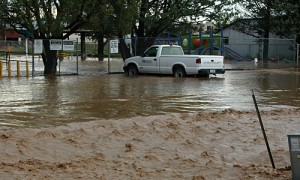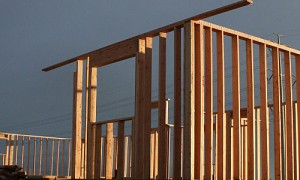Preventative Measures for Floods: Texas Edition
Know how to prevent flood damage by taking a few precautionary measures when building or owning a home. Learn how these steps can save you time and money with plumbing, electrical, and water damage problems.
When it rains, it pours, but in the Dallas-Fort Worth area, it can also collect, stand, and encourage mold growth. Home to many floodplains, this North Texas region can offer its share of obstacles and setbacks to the unfortunate and unprepared. Thankfully, engaging in a few preventative measures for floods can spare you from having rain hang you out to dry.
Get on Top of the Problem
Don’t let a leaky roof cloud your enjoyment of your home or its structural integrity. Leaky roofs are a common reason why flood damage occurs in homes. Hire a professional to inspect overhead to determine if any repairs need to be done. Ensure that each and every shingle occupies its appropriate place and doesn’t move easily. Inquire about any waterproof barriers that may deter the accumulation of water and inadvertent seepage.
Give Your Foundation Extra Support
Cracks in a foundation and other cement structures connected to your house may provide a way for water to sneak into your home. If you spot a crack in your foundation, don’t wait to get it fixed. Fill the offending crevice with materials that are designed to deftly close gaps, like caulk. Using materials like this can guard against a reappearance of the crack after additional or later physical stress.
Get Your Hand In the Gutter
The gutters’ main purpose is to direct rain away from your home. To have them work properly, you’ll need to regularly clean them and remove any debris, like leaves, branches, and other organic material, that has accumulated in them. Check to make sure that drainage systems and downspouts on your property are up to code and up to par. While you’re at it, walk out onto your street to verify that the storm drains closest to your home are free of blockages. If you find that one needs cleaning, poke it with a rake to loosen any clogged materials.
Don’t Let Sewage Problems Drain You
Flooding can often cause highly undesirable sewage complications. To make sure that things continue to run smoothly along your home’s pipes, install standpipes or backflow valves to flush out problems before they arise. Keeping your plumbing working at an optimum level can be one of the best preventative measures for floods you can take as a homeowner.
Preventative Measures for Home Builders
If you’re designing a home, or are willing to hire a contractor to make some modifications, draw up plans to elevate electrical components so that they’re stationed at least a few feet above your area’s flood level. Your furnace, water heater, fuel tanks, and generators should also sit above the flood level, as these can be compromised if they come into contact with water. Waterproof your basement by sealing its walls with water-resistant materials.
Construct barriers, such as beams, along your home to block water from flowing onto your property. Sandbags can function as a quick fix if a strong storm catches you by surprise while you’re waiting to build your permanent barriers. Should you have a green thumb, put it to good use by planting vegetation known for resisting soil erosion. If you implement these flood prevention tips, incorporate greenery into your protective measures, and purchase flood insurance, you’ll win the “most prepared homeowner” award by a landslide.
[cf]skyword_tracking_tag[/cf]




